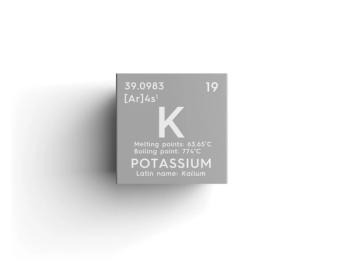
In a new study, a group of scientists investigated the potassium isotopic composition of different plant reference materials using multi-collector inductively coupled plasma mass spectrometry (MC-ICP-MS).

In a new study, a group of scientists investigated the potassium isotopic composition of different plant reference materials using multi-collector inductively coupled plasma mass spectrometry (MC-ICP-MS).
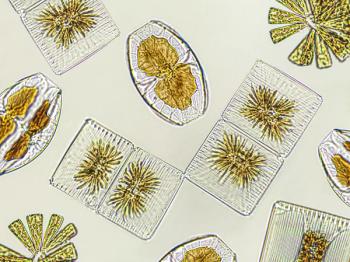
Using single-cell inductively coupled plasma mass spectrometry (SC-ICP-MS), scientists from Kanazawa, Japan created a new method for detecting cadmium in marine phytoplankton.
In a recent study, quadrupole mass spectrometry (QMS) was used to test the amount of deuterium atoms from aluminum layers.

Award recipient John McLean of Vanderbilt University said hybrid techniques do not exist purely as combinations of letters, slashes, and hyphens—they have been built on the shoulders of decades’ worth of analysis intended to refine and simplify workflow.

John A. McLean, Stevenson Professor of Chemistry and Chair of the Department of Chemistry, Associate Provost for Graduate Education, and Director of the Center for Innovative Technologies at Vanderbilt University, has been named the winner of the 2023 EAS Award for Outstanding Achievements in Mass Spectrometry.

A type of calcite whose name comes from a resource-rich basin in northwest China was earmarked as a promising reference material for laser ablation inductively coupled plasma mass spectrometry (LA-ICP-MS) in situ U–Pb dating.

On Tuesday October 10th from 3:50–5:30 pm, an oral session focusing on 50 years in mass spectrometry will take place. We preview this session here.

Earlier this year, Spectroscopy spoke to Maria Montes-Bayón of the Faculty of Chemistry at the University of Oviedo (Asturias, Spain) regarding her work with single cell inductively coupled plasma mass spectrometry (ICP-MS) to study the uptake and apoptotic status of nanoplatinum (IV) treated cells, specifically selenized yeast.

Glow discharge (GD) spectroscopy is a well-established method in the elemental analysis of metals, coatings, and surface-modified materials.

This year’s recipient of the Coblentz Award, Wei Xiong of the University of California, San Diego, is being honored for his work. Spectroscopy spoke to Xiong about his work and his feelings about receiving this award.
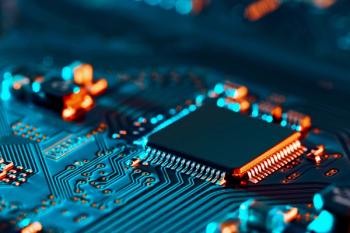
A recent study tests new systems meant to better analyze components in the semiconductor industry and pave the way for better electronic devices.
A new article reviews methods for determining trace elements in germanium and germanium dioxide, highlighting the advantages and limitations of methods with and without matrix separation procedures.

New research presents a fast and sensitive method for the simultaneous determination of zinc and iron in vegetables and plant material using HR-CS GF-AAS.
Andreas Riedo of the Physics Institute at the University of Bern, the 2023 winner of the Emerging Leader in Atomic Spectroscopy Award, is using laser ablation–desorption ionization mass spectrometry (LIMS) to chemically analyze complex mineral surfaces found in space exploration.

In the past 20 years, spectrometers have shrunk dramatically in size, and this shrinking has been achieved with only modest performance reductions in sampling versatility, spectral range, spectral resolution, and signal-to-noise.

Our annual review of new products for atomic and molecular spectroscopy, including details by category and highlights of overarching trends.

Laser ablation laser ionization time-of-flight mass spectrometry (LALI-TOF-MS) can quantify elemental constituents without the need for matrix-matching, making it attractive for metals testing, particularly for additive manufacturing.

Method development for ICP-MS/MS should not be difficult. The six steps here will guide you to success.

Accurate determination of the elemental composition of nickel-based alloys is essential, given their use in high-performance equipment. This XRF technique enables rapid and nondestructive detection, as an alternative to existing approaches.

How to create trouble-free sample preparation workflow for elemental analysis.

A tutorial and spreadsheet for the validation and uncertainty evaluation for ICP-MS analysis was successfully applied to determine multiple elements in a nasal spray.

The way the analytical signal is managed in ICP-MS has a direct impact on the results generated. In this first of a two-part series, we explain the fundamental principles of a scanning quadrupole and how measurement protocols can be optimized based on data quality objectives.

This article covers a portion of the analytical equipment and techniques used in the production of beer across the supply chain.

This study describes how interference-free, low-level analysis of toxic elements as well as major elements in particulate matter (PM), with an aerodynamic diameter of 2.5 μm or smaller, can be accomplished. Comparison study examples are given for two locations.

A team of researchers at the University of Brighton in England used a combination of geochemical and statistical approaches to determine where Stonehenge’s sarsen (silcrete) megalith stones came from.